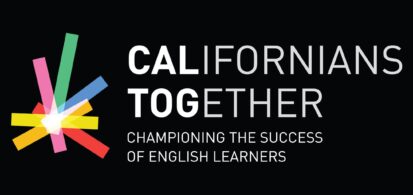In response to requests for guidance from Local Educational Agencies (LEAs) on the implications of AB 714 for newcomer students, the California Department of Education (CDE) has posted updated FAQs for AB 714 and AB 2121 in relation. Below, we summarize the major takeaways and cite official pages for LEA use.
Major Takeaways
- The passage of AB 714 does not constrain current LEA operations, implementations, requirements, or abilities. It is focused on developing state-level system changes, including guidance, data reports, and inclusion in curriculum frameworks.
- LEAs retain the local authority to continue supporting students they designate as newcomers in the same way they did prior to the passage of AB 714, including graduation credit exemptions and a fifth year of high school allowed by AB 2121.
Sources & Text to Cite for LEAs to Dig Deeper
The AB 714 FAQ document provides what will be most useful as general context, while the updated AB 2121 FAQ provides the direct clearance to continue providing graduation credit exemptions and a fifth year of high school for students that an LEA defines as newcomers, regardless of whether they meet the new state definition.
Question 10 from the updated AB 2121 FAQ explicitly states that LEAs have the local discretion to continue supporting students they define as newcomers with graduation credit exemption and a fifth year of high school. It is directly quoted below:
10. Do districts have local authority to grant graduation credit exemptions and a fifth year of high school, under AB 2121, for students who are no longer newcomer pupils as defined in EC 51225.2 (3)?
Yes. Per EC Section 35160, “the governing board of any school district may initiate and carry on any program, activity, or may otherwise act in any manner which is not in conflict with or inconsistent with, or preempted by, any law and which is not in conflict with the purposes for which school districts are established.” Additional guidance is available on the California Department of Education Local Control – Districts and Counties web page.
Districts have every reason to continue serving newcomers with these supports in the manner they did prior to the passage of AB 714. In sponsoring the development of AB 714, Californians Together supported the creation of a common definition of newcomers to allow for state level data analysis for improved visibility, decision making, and support. While this definition initially appeared to some LEAs to be narrowing the eligibility for credit exemptions and high school graduation exemptions, this is not the case. Districts retain their local discretion to continue doing this.
The AB 714 FAQs are embedded as a tab on the CDE Newcomer Webpage. They explain that AB 714:
- Does not require new data reporting or requirements for LEAs (Q2, Q4)
- Defines “newcomer pupil” the same as federal definition for “immigrant children and youth: (a) age 3-21; (b) not born in a US state; in US schools for no more than 3 academic years” (Q3)
- Impacts AB 2735 and AB 2121 by updating education code [with the new student definition] (Q5)
- Says nothing about expanding or narrowing the pool of students eligible for graduation credit requirement exemptions and a fifth year of high school, and that eligibility for AB 2121 exemptions will depend on the procedures each LEA had in place regarding newcomer students prior to AB 714 taking effect. (Q6)
In summary, the new newcomer definition is meant to support state level planning and analysis for the field, not current LEA practice. While the language of AB 2121 has been updated, discretion has been intentionally left to LEAs to continue using the same exemptions and extensions they have in the past, which is explicitly stated in the AB 2121 FAQs. This flexibility exists both because of the broad local discretion that LEAs have always enjoyed with regard to graduation credit exemptions and a fifth year of high school prior to AB 2121, and choices made by the legislature and the CDE.
